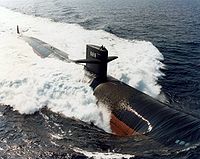
Photo from wikipedia
Phosphoenolpyruvate carboxylase (PEPC) is a key enzyme in the C4 photosynthetic pathway of many of the world's worst weeds and a valuable target to develop C4 plant‐selective herbicides. By virtual… Click to show full abstract
Phosphoenolpyruvate carboxylase (PEPC) is a key enzyme in the C4 photosynthetic pathway of many of the world's worst weeds and a valuable target to develop C4 plant‐selective herbicides. By virtual screening, analog synthesis, and in vitro validation, we identified pyrazolidine‐3,5‐diones as a new class of small molecules with inhibitory potential down to the submicromolar range against C4 PEPC and a selectivity factor of up to 16 over C3 PEPC. No other biological activity has yet been reported for the best compound, (3‐bromophenyl)‐4‐(3‐hydroxybenzylidene)‐pyrazolidine‐3,5‐dione. A systematic variation in the substituents allowed the derivation of a qualitative structure–activity relationship. These findings make this compound class highly interesting for further investigations toward generating potent, C4 plant‐selective herbicides with a low potential for unwanted effects.
Journal Title: FEBS Letters
Year Published: 2017
Link to full text (if available)
Share on Social Media: Sign Up to like & get
recommendations!